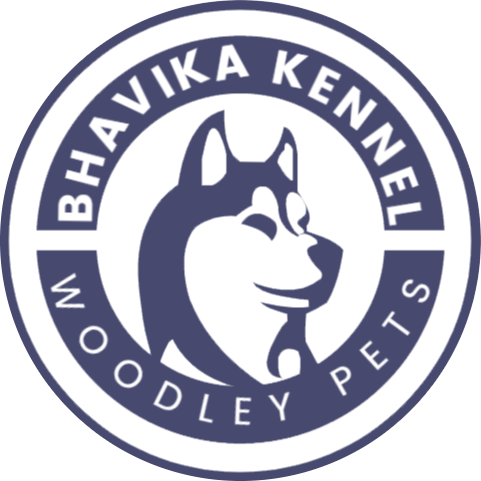FRENCH BULL DOG
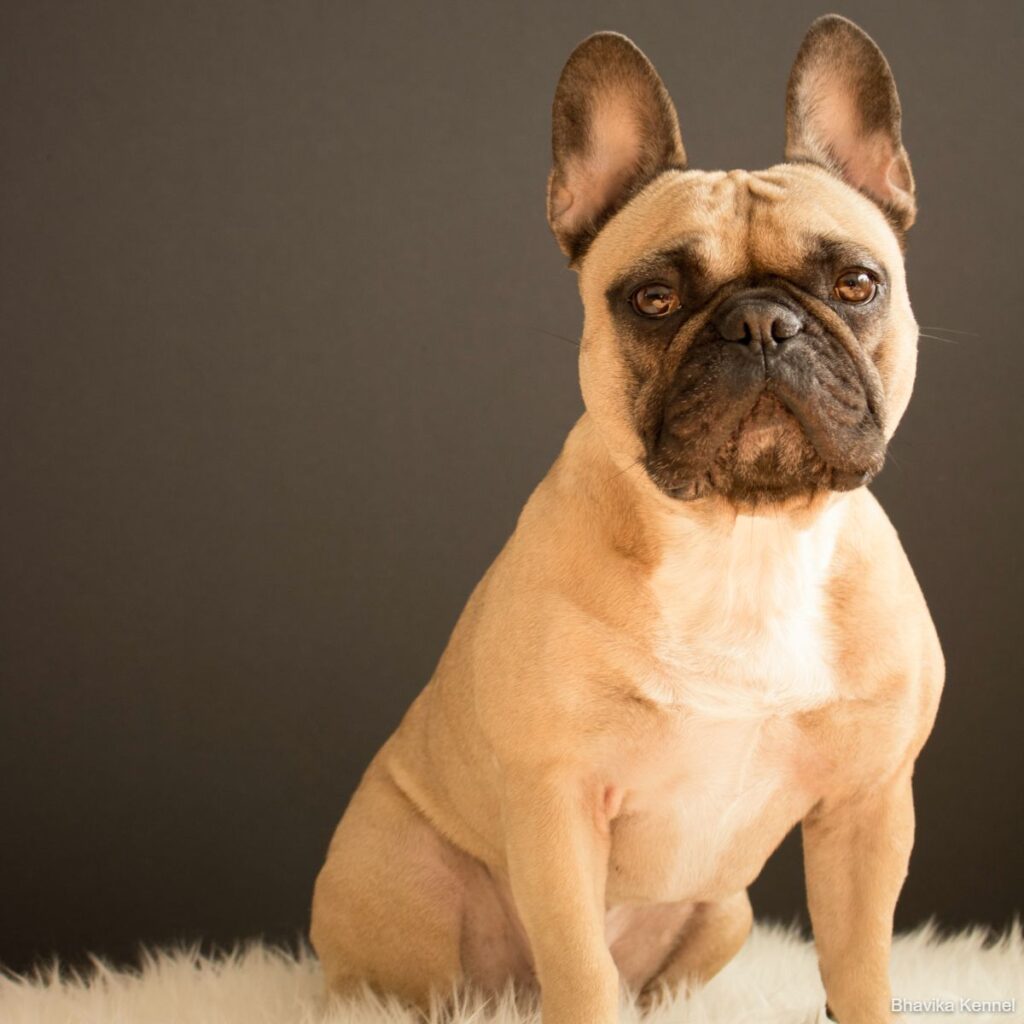

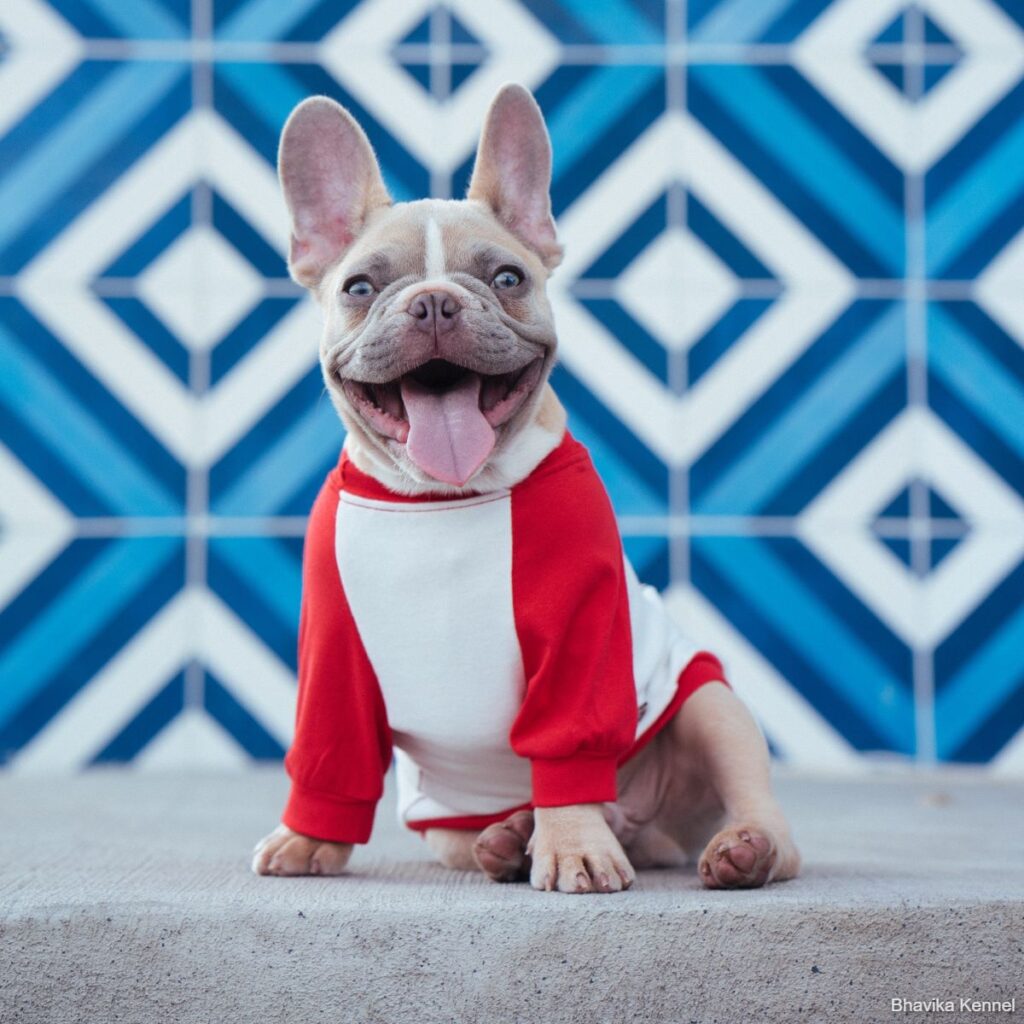

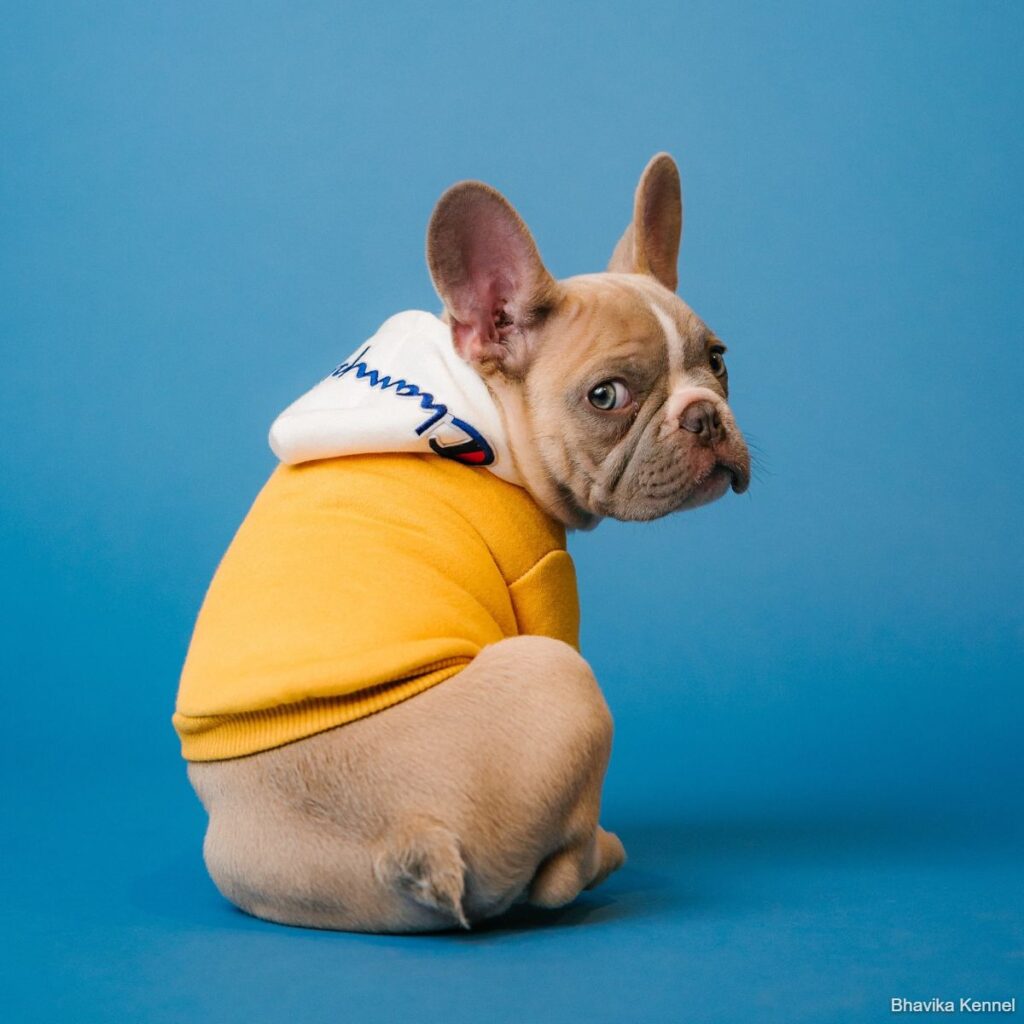
About This Breed
The French Bulldog has enjoyed a long history as a companion dog. Created in England to be a miniature Bulldog, they accompanied English lacemakers to France, where they acquired their “Frenchie” moniker.
Besides being companions, they once served as excellent ratters, but today their job focuses on being fabulous family friends and show dogs. Even apartment dwellers and first-time pet parents will love this affectionate breed.
It’s important to remember that dogs of any breed can suffer from health issues throughout their lives. A good pet insurance plan can help you prepare to give your dog the care they need at any age.
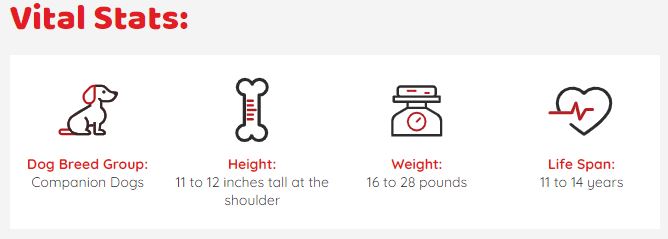
More about this breed
Bat-eared but oddly beautiful, the French Bulldog has a unique appeal. Aesthetically, other breeds undeniably are more glamorous and showy, but beauty is in the eye of the beholder and what many behold in the French Bulldog are the attributes that make this breed one of the best companion dogs in the world today.
The French Bulldog is small but substantial in build with a powerful muscular body. He sports a short easy-care coat to accompany his easygoing personality. The Frenchie likes to play, but he also enjoys spending his days relaxing on the sofa.
That love of play and relaxed attitude carry over into their training sessions. French Bulldogs are intelligent, and training them is easy as long as you make it seem like a game and keep it fun. They are free thinkers and are not an ideal breed for competing in obedience or agility although some have risen to the challenge. This freethinking approach can also lead to a stubborn nature, and if they decide to dig in their heels there is no budging them.
Frenchies are loving companions who thrive on human contact. If you want an outdoor dog who can be left alone for long periods, the Frenchie is not the breed for you. This is a dog who enjoys lavishing love on his human companions as much as he loves the same treatment in return. They generally get along well with everyone, including children. They can, however, be territorial and possessive of their people, especially in the presence of other dogs. Socialization is a must for this breed, but with their easy companionship this is an enjoyable task.
With a nature that is both humorous and mischievous, the French Bulldog needs to live with someone who is consistent, firm, and patient with all the antics and idiosyncrasies that make him both frustrating and delightful.
French Bulldogs make excellent watchdogs and will alert their people to approaching strangers, but it’s not their style to bark without cause. They can be protective of their home and family and some will try to defend both with their life.
French Bulldogs do not need a lot of room and do very well in apartments or small dwellings. A couple of 15-minute walks per day should keep them from becoming overweight. Keep the Frenchie in cool, comfortable surroundings. He’s susceptible to heat exhaustion and needs an air-conditioned environment. This is not a dog who can stay outside on a hot day.
French Bulldogs are wonderful companion dogs with a gentle nature. If you work at home, the Frenchie is happy to lie at your feet all day or follow you from room to room. People who love them describe them as mischievous goof balls and can’t imagine life without them. They are a constant presence, and they’ll love you with all the strength in their small bodies, proving time and again that beauty is on the inside.
· Highlights
- French Bulldogs do not need a lot of exercise, but they do need daily walks to keep them at a healthy weight.
- French Bulldogs do not handle heat very well and need to be monitored on hot days to ensure that they don’t overexert themselves.
- French Bulldogs can be easy to train, but they can also be stubborn. Be firm and patient when training this breed.
- If you value cleanliness the French Bulldog may not be the dog for you, since he is prone to drooling, flatulence and some shedding. He can also be difficult to housetrain.
- French Bulldogs can be a quiet breed and are not known as a breed that barks frequently although there are exceptions to every rule.
- Because they don’t tend to be excessive barkers, French Bulldogs make exceptional apartment dogs.
- Although it is important to always supervise young children and dogs when they are together, the French Bulldog does very well with children.
- French Bulldogs make wonderful watchdogs, but they can become territorial. They also like being the center of attention, which can lead to behavioral problems if they are overindulged.
- French Bulldogs are companion dogs and thrive when they have human contact. They are not a breed that can be left alone for long periods or left outside to live.
- To get a healthy dog, never buy a puppy from an irresponsible breeder, puppy mill, or pet store.
· History
The French Bulldog originated in England and was created to be a toy-size version of the Bulldog. The breed was quite popular among lace workers in the city of Nottingham and when many lace workers emigrated to France for better opportunities, they naturally brought their little bulldogs with them.
The French Bulldog thrived in France and Europe, and his charm was soon discovered by Americans as well. The United States saw its first French Bulldog at the Westminster Kennel Club show in 1896. The breed was quickly nicknamed “Frenchie,” and it is still an affectionate name that is used today.
· Size
Generally a French Bulldog is about 11 to 12 inches tall. Males weigh 20 to 28 pounds, females 16 to 24 pounds.
· Personality
This is a smart, loving dog who wants and needs to spend lots of time with his people. A fun-loving freethinker, the French Bulldog takes well to training when it’s done in a positive manner with lots of food rewards, praise, and play.
· Health
Not all Frenchies will get any or all of these diseases, but
it’s important to be aware of them if you’re considering this breed.
- Hip Dysplasia: Hip dyplasia is a heritable condition in which the femur doesn’t fit snugly into the pelvic socket of the hip joint. Hip dysplasia can exist with or without clinical signs. Some dogs exhibit pain and lameness on one or both rear legs. As the dog ages, arthritis can develop. X-ray screening for hip dysplasia is done by the Orthopedic Foundation for Animals or the University of Pennsylvania Hip Improvement Program. Dogs with hip dysplasia should not be bred. Ask the breeder for proof that the parents have been tested for hip dysplasia and found to be free of problems.
- Brachycephalic Syndrome: This disorder is found in dogs with short heads, narrowed nostrils, or elongated or soft palates. Their airways are obstructed to varying degrees and can cause anything from noisy or labored breathing to total collapse of the airway. Dogs with brachycephalic syndrome commonly snuffle and snort. Treatment varies depending on the severity of the condition but includes oxygen therapy as well as surgery to widen nostrils or shorten palates.
- Allergies: Allergies are a common problem in dogs. There are three main types of allergies: food-based allergies, which are treated by an elimination process of certain foods from the dog’s diet; contact allergies, caused by a reaction to a topical substance such as bedding, flea powders, dog shampoos, and other chemicals, and treated by removing the cause of the allergy; and inhalant allergies, caused by airborne allergens such as pollen, dust, and mildew. The medication for inhalant allergies depends on the severity of the allergy. It is important to note that ear infections often accompany inhalant allergies.
- Hemivertebrae: This is a malformation of one or more vertebrae that causes it to be shaped like a wedge or triangle. This malformation can occur on its own or with other vertebrae malformations. Hemivertebra can cause no problems, or it can put pressure on the spinal cord. This can lead to pain, weakness, and or paralysis. There is no treatment for the condition unless there is spinal cord pressure.
- Patellar Luxation: Also known as “slipped stifles,” this is a common problem in small dogs. It is caused when the patella, which has three parts — the femur (thigh bone), patella (knee cap), and tibia (calf) — is not properly lined up and slips in and out of place (luxates). This causes lameness or an abnormal gait (the way the dog moves). It is a congenital disease, meaning it’s present at birth, although the actual misalignment or luxation does not always occur until much later. The rubbing caused by patellar luxation can lead to arthritis, a degenerative joint disease. There are four grades of patellar luxation ranging from grade I, an occasional luxation causing temporary lameness in the joint, to grade IV, in which the turning of the tibia is severe and the patella cannot be realigned manually. This gives the dog a bowlegged appearance. Severe grades of patellar luxation may require surgical repair.
- Intervertebral Disc Disease (IVDD): IDD occurs when a disc in the spine ruptures or herniates and pushes upward into the spinal cord. When the disc pushes into the spinal cord, nerve transmissions are inhibited from traveling along the spinal cord. Intervertebral Disc Disease can be caused by trauma, age, or simply from the physical jolt that occurs when a dog jumps off a sofa. When the disc ruptures, the dog usually feels pain and the ruptured disc can lead to weakness and temporary or permanent paralysis. Treatment usually involves nonsteroidal anti-inflammatory drugs (NSAIDS) made specially for dogs. Never give your dog Tylenol or other NSAIDs made for people as they can be toxic. In some cases surgery can help, but it must be done within a day or so of the injury. You may also want to ask your veterinarian about physical rehabilitation. Treatments such as massage, water treadmills and electrical stimulation are available for dogs and can have excellent success.
- Von Willebrand’s Disease: This is a blood disorder that can be found in both humans and dogs. It affects the clotting process due to the reduction of von Willebrand factor in the blood. A dog affected by von Willebrand’s disease will have signs such as nose bleeds, bleeding gums, prolonged bleeding from surgery, and prolonged bleeding during heat cycles or after whelping. Occasionally blood is found in the stool. This disorder is usually diagnosed in your dog between the ages of 3 and 5 and cannot be cured. However, it can be managed with treatments that include cauterizing or suturing injuries, transfusions of the von Willebrand factor before surgery, and avoiding certain medications.
- Cleft Palate: The palate is the roof of the mouth and separates the nasal and oral cavities. It is made up of two parts, hard and soft. A cleft palate has a slit that runs bilaterally or unilaterally and can range in size from a small hole to a large slit. A cleft palate can affect both the hard and soft palate separately and together and may cause a cleft lip. Puppies can be born with cleft palates, or a cleft palate can occur from an injury. Cleft palates are fairly common in dogs, but many puppies born with a cleft palate do not survive or are euthanized by the breeder. The only treatment for a cleft palate is surgery to close the hole, although not all dogs with a cleft palate require the surgery. It is important to get a diagnosis and treatment recommendation from your veterinarian.
- Elongated Soft Palate: The soft palate is the extension of the roof of the mouth. When the soft palate is elongated, it can obstruct airways and cause difficulty in breathing. The treatment for Elongated Soft Palate is surgical removal of the excess palate.
If you’re buying a puppy, find a good breeder who will show you health clearances for both your puppy’s parents. Health clearances prove that a dog has been tested for and cleared of a particular condition.
In Frenchies, you should expect to see health clearances from the Orthopedic Foundation for Animals (OFA) for hip dysplasia (with a score of fair or better), elbow dysplasia, hypothyroidism, and von Willebrand’s disease; from Auburn University for thrombopathia; and from the Canine Eye Registry Foundation (CERF) certifying that eyes are normal. You can confirm health clearances by checking the OFA web site (offa.org).
Regardless of how healthy your dog is when you first bring them home, you should prepare for any issues that may come up throughout their life. A pet insurance plan can help you stay ready for any of your dog’s veterinary needs.
· Care
French Bulldogs do not need a lot of exercise. They have fairly low energy levels, although there are exceptions to every rule. To keep their weight down, however, they need daily exercise through short walks or play times in the yard. Many French Bulldogs enjoy playing and will spend much of their time in various activities, but they are not so high energy that they need a large yard or long periods of exercise. This breed is prone to heat exhaustion and should not be exercised in hot temperatures. Limit walks and active play to cool mornings and evenings.
When training a French Bulldog, take into account that although they are intelligent and usually eager to please, they are also free thinkers. That means they can be stubborn. Many different training techniques are successful with this breed, so don’t give up if a certain method doesn’t work; just try a different technique. To pique your Frenchie’s interest, try to make training seem like a game with lots of fun and prizes.
It is important to crate train your French Bulldog puppy even if you plan to give him the freedom of the house when he reaches adulthood. Regardless of breed, puppies explore, get into things they shouldn’t, and chew things that can harm them. It can be expensive both to repair or replace destroyed items and to pay the vet bills that could arise, so crate training benefits your wallet and your temper as well as your puppy’s well being.
· Feeding
Recommended daily amount: 1 to 1.5 cups of high-quality dry food a day, divided into two meals.
NOTE: How much your adult dog eats depends on his size, age, build, metabolism, and activity level. Dogs are individuals, just like people, and they don’t all need the same amount of food. It almost goes without saying that a highly active dog will need more than a couch potato dog. The quality of dog food you buy also makes a difference — the better the dog food, the further it will go toward nourishing your dog and the less of it you’ll need to shake into your dog’s bowl.
For more on feeding your Frenchie, see our guidelines for buying the right food, feeding your puppy, and feeding your adult dog
.
· Coat Color And Grooming
The coat of the French Bulldog is short, smooth, shiny, and fine. The skin is loose and wrinkled, especially at the head and shoulders, and has a soft texture.
French Bulldogs come in a variety of colors, including fawn, cream, various shades of brindle — a coat patterned with specks and streaks of light and dark markings — such as black brindle and the striking tiger brindle, and brindle and white, known as brindle pied. French Bulldogs can be any color except solid black, liver (a solid reddish-brown with brown pigmentation on the lips and nose), mouse (a light steely gray), and black with white or tan.
Run from any breeder who tells you that a particular color is rare and thus worth more money. Conversely, remember that you can’t just order up a puppy of a particular color and gender. Having your heart set on a fawn female is a recipe for disappointment when the litter contains only cream and brindle males.
French Bulldogs are fairly easy to groom and need only an occasional brushing to keep their coat healthy. They are average shedders. Begin grooming your Frenchie at a young age and teach your puppy to stand on a table or floor to make this experience easier on both of you. When you are grooming your Frenchie at any stage of life, take the time to check for any scabs, skin lesions, bare spots, rough, flaky skin, or signs of infections. You should also check ears, eyes and teeth for any discharge or bad smells. Both are signs that your Frenchie may need to see the veterinarian.
Clean ears regularly with a damp warm cloth and run a cotton swab around the edge of the canal. Never stick the cotton swab into the actual ear canal. If the edges of the ears are dry, apply mineral or baby oil sparingly. The oil can also be used on a dry nose.
French Bulldogs do not naturally wear their nails down and will need their nails trimmed regularly. This prevents splitting and tearing, which can be painful for the dog.
Keep the facial wrinkles clean and dry to prevent bacterial infections. Whenever you bathe your dog, take the time to thoroughly dry the skin between the folds. Bathe your French Bulldog monthly or as needed, and use a high-quality dog shampoo to keep the natural oils in his skin and coat.
French Bulldogs should be easy to groom, and with proper training and positive experiences during puppyhood, grooming can be a wonderful bonding time for you and your Frenchie. If you’re uncomfortable with any aspect of grooming, such as trimming nails, take your dog to a professional groomer who understands the needs of French Bulldogs.
· Children And Other Pets
Frenchies get along well with children, and they’re not so tiny that they can’t live in a household with a toddler. That said, no dog should ever be left alone with a young child. It’s just common sense to supervise and make sure that neither is poking or otherwise harassing the other.
When they are socialized to them during puppyhood, Frenchies can get along well with other dogs and cats. Overly spoiled Frenchies, however, may be jealous toward other dogs, especially if those other dogs are getting attention from the Frenchie’s very own person.
